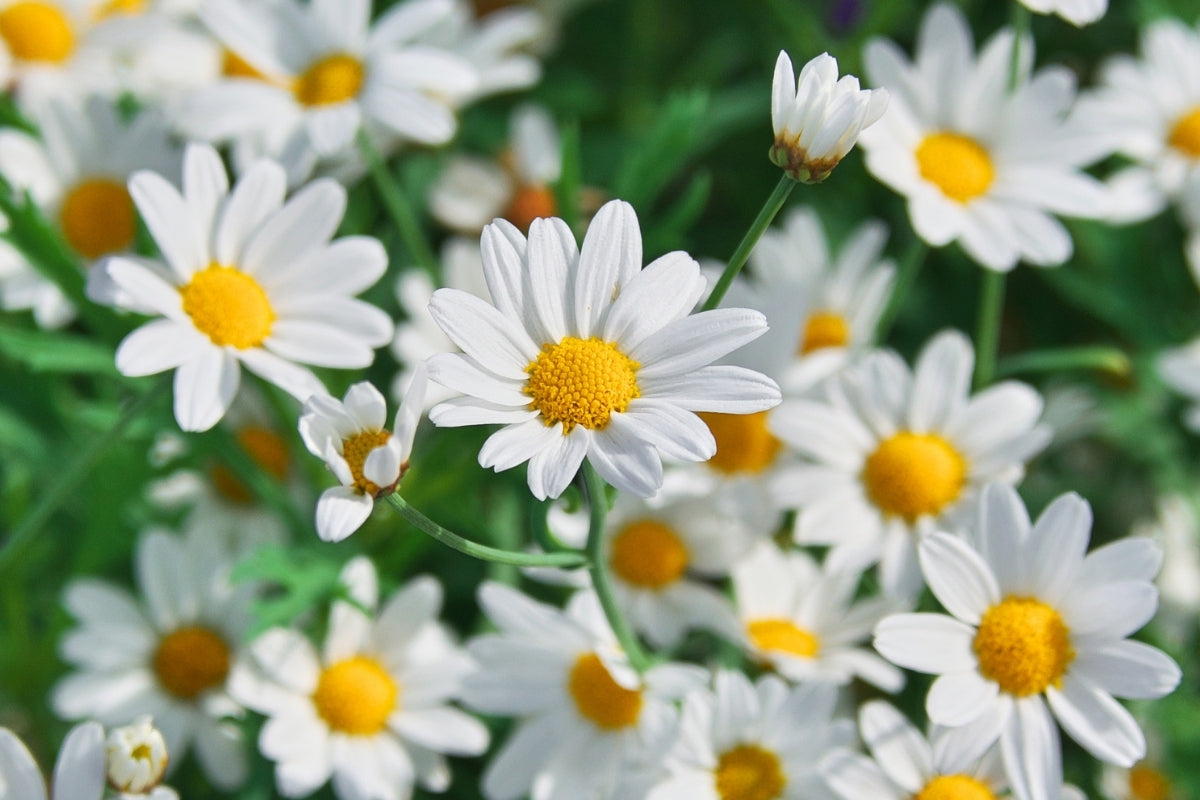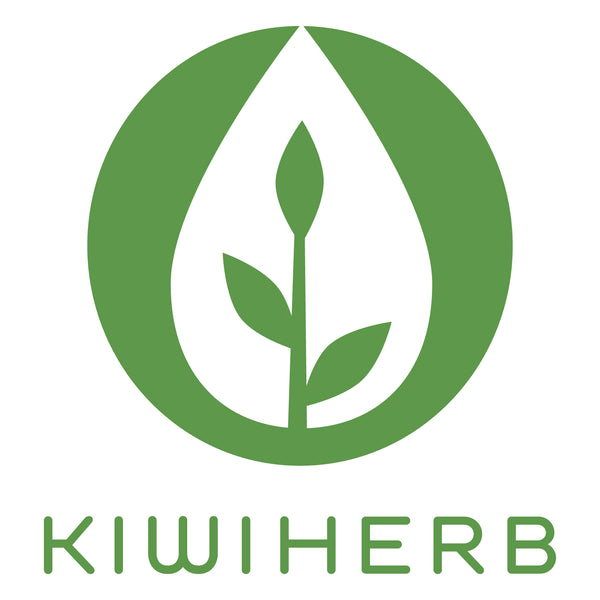- Home
- Herb Profiles
- Chamomile
Chamomile
As a mother does, chamomile soothes, calms and comforts when nothing else seems to do the trick.
This gentle, calming action makes it an ideal herb for restless and anxious children. These actions make it useful as a digestive tonic. A study showed Chamomile, in combination with pectin (found in fruits and vegetables), to be effective in reducing the duration and discomfort of diarrhoea in children.

Botanical name: Matricaria recutita/chamomilla
Common name: Chamomile, German Chamomile, Scented Mayweed, Blue Chamomile, Hungarian Chamomile (Kamilla), Wild Chamomile, Camomile
Part used: Flower
Frequently asked questions
What is Chamomile good for?
Internally, Chamomile is beneficial for many kinds of gastrointestinal disturbances, particularly those associated with nervous irritability. It’s carminative, spasmolytic and anti-inflammatory actions soothe gastrointestinal cramping, bloating and flatulence. Making it useful for irritable bowel syndrome (IBS), colic and stress-related digestive upset. Chamomile also relaxes smooth muscle in the digestive tract, reducing spasms and discomfort. It can also support digestion when taken after meals and is commonly used in herbal tea blends to calm the stomach.
Topically, Chamomile promotes wound healing and is beneficial for inflammatory skin conditions such as eczema and psoriasis. Its anti-inflammatory and antimicrobial properties work to reduce skin redness, swelling and risk of infection. Chamomile can be added to creams and balms for topical application on the skin. It may be applied to the mouth and gums to reduce inflammation and discomfort, particularly in children experiencing teething. Using cod chamomile tea as a mouth rinse is helpful for gingivitis and mouth ulcers.
Which part of Chamomile has the highest concentration of active constituents?
The flower heads of Chamomile contain the highest concentration of active constituents.
These are the parts used in herbal teas, liquid extracts and topical preparations.
What are the active constituents in Chamomile?
Essential oils (chamazulene and alpha-bisabolol).
- Chamazulene has anti-inflammatory effects by inhibiting COX-2 enzyme pathways.
- Alpha-bisabolol modulates inflammatory pathways and enhances wound healing, while also providing antimicrobial action.
Flavonoids (apigenin, luteolin and quercetin).
- Apigenin increases GABA activity in the brain, resulting in reduced anxiety and a heightened feeling of calm and relaxation.
- Luteolin and quercetin inhibit inflammatory enzymes, reduce oxidative stress, modulate the immune response and slow the release of histamine. Making them useful in allergic and inflammatory conditions.
Polysaccharides (mucilage).
- Mucilage has a demulcent action, coating and soothing irritated mucous membranes in the throat and gastrointestinal tract. Making chamomile useful for sore throats, dry coughs and an irritated stomach.
Coumarins (umbelliferone).
- Umbelliferone exerts anti-fungal and anti-bacterial activity by rupturing fungal and bacterial cell membranes.
Does Chamomile tea make you sleepy?
Yes, one of Chamomiles primary uses is for anxiety-relief. Clinical studies have revealed the constituent apigenin to produce calming effects through modulation of GABA receptors, exerting anxiolytic effects. It also helps regulate the hypothalamic-pituitary-adrenal (HPA) axis and neurotransmitter signalling, which play a key role in the stress response.
Clinical studies report improvements in anxiety symptoms among individuals with generalised-anxiety disorder (GAD), postmenopausal-related anxiety and anxiety associated with PMS.
Is Chamomile safe during pregnancy?
Chamomile is considered a generally safe herb during pregnancy. There is no credible evidence of increased risk of malformation or harm to the foetus.
However, it is recommended to consult a naturopath or medical herbalist before using any herbal supplements during pregnancy.
Always follow dosage recommendations and consult with a naturopath or medical herbalist if using other medications or herbal products.
Is Chamomile safe for children?
Yes, Chamomile is safe for children and is one of the most used herbs for soothing digestive discomfort, relieving gas, supporting sleep and easing nervous tension.
It is also used topically for skin rashes and teething pain.
Is Chamomile tea good for kids with ADHD?
Chamomile is one herbal remedy that parents may use to support their children with ADHD, largely for its mild sedative and anxiolytic effects. It is usually administered as an herbal tea, alongside other herbs including lemon balm, passionflower, and hops.
Research suggests chamomile tea is generally regarded as safe and effective for helping children relax. Additionally, a small open-label study involving three adolescent boys (ages 14–16) with ADHD found that supplementation with Chamomile extract resulted in improvements in hyperactivity, inattention, and immaturity scores. This is theorised to be due to Chamomiles inhibitory effect on serotonin and noradrenaline reuptake.
While Chamomile may offer moderately supportive benefits, particularly in calming and attention. It is important to consider its use as a complementary, not primary support for ADHD in children.
How do you grow Chamomile?
Growing Chamomile in New Zealand requires a sunny spot with well-drained soil, ideally in spring after the last frost. Chamomile (Matricaria recutita) is an annual that grows easily from seed. Sow seeds directly into the soil or start germination indoors. Lightly cover the seeds with soil and keep the soil moist but not waterlogged. Once established, chamomile is relatively low-maintenance and tolerates dry conditions well. Regular harvesting of the flower heads encourages more blooms, and cutting the plants back after flowering can help maintain shape and promote further growth.
When is the best time to plant Chamomile?
In New Zealand, the best time to plant Chamomile outdoors is early to mid-to late September to reduce the risk of frost. For warmer areas in the North Island, you could start as early as August with additional frost protection.
Chamomile enjoys being planted in well-draining and light soil, with full access to sunshine. It is best to avoid planting in heavy clay or water-logged soil.
When is the best time to harvest Chamomile?
In New Zealand, the best time to harvest Chamomile is early to mid-summer. Harvest when the flower heads are fully open. This is when the concentration of active constituents is at their peak. It is best to harvest the flower heads in the morning after the dew has dried and before the heat of the day, to preserve the essential oils.
Where is Chamomile native to?
Chamomile (Matricaria recutita) is native to southern and eastern Europe, where it has been used for centuries as a traditional medicinal herb. Over time, it has spread to numerous parts of the world due to its calming properties and adaptability. Presently, it is widely cultivated in temperate regions, including New Zealand.
Where did Chamomile tea originate from?
The Egyptians used chamomile as an herbal remedy and incorporated it into religious ceremony. Its use later spread to ancient Greece and Rome, where it was also prized for its soothing effects. Since its ancient beginnings, Chamomile tea has become a popular natural remedy for various ailments across the world.
References
Becker, B., Kuhn, U., & Hardewig-Budny, B. (2006). Double-blind, randomized evaluation of clinical efficacy and tolerability of an apple pectin-Chamomile extract in children with unspecific diarrhoea. Arzneimittelforschung, 56(6), 387–393. https://doi.org/10.1055/s-0031-1296739
Kramer, D. J., & Johnson, A. A. (2024). Apigenin: A natural molecule at the intersection of sleep and aging. Frontiers in Nutrition, 11. https://doi.org/10.3389/fnut.2024.1359176
Niederhofer, H. (2009). Observational study: Matricaria chamomilla may improve some symptoms of attention-deficit hyperactivity disorder. Phytomedicine, 16(4), 284–286. https://doi.org/10.1016/j.phymed.2008.10.006
Singh, O., Khanam, Z., Misra, N., & Srivastava, M. (2011). Chamomile (Matricaria chamomilla L.): An overview. Pharmacognosy Reviews, 5(9), 82. https://doi.org/10.4103/0973-7847.79103
The use of alternative therapies in treating children with attention deficit hyperactivity disorder. (2002). Paediatrics & Child Health, 7(10), 710–718. https://doi.org/10.1093/pch/7.10.710
Sogand Saadatmand, Foad Zohroudi, & Hadith Tangestani. (2024). The effect of oral Chamomile on anxiety: A systematic review of clinical trials. Clinical Nutrition Research, 13(2), 139–139. https://doi.org/10.7762/cnr.2024.13.2.139

